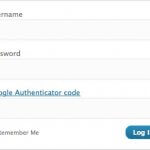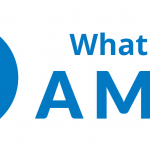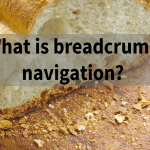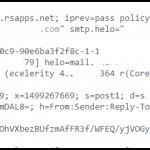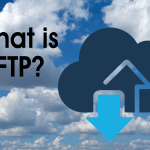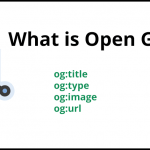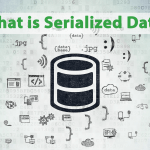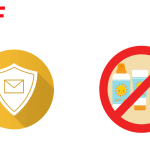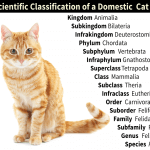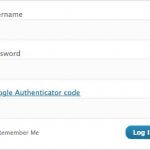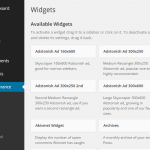WordPress Glossary
2-Factor Authentication
Two-step verification (TSV or 2SV), also known as two-step authentication, two-factor authentication, double authentication, and two-factor authentication (2FA), is a way to verify your identity upon login.
AMP
AMP (Accelerated Mobile Pages) is an open-standard project from Google designed to improve mobile user experience by making mobile websites faster. To do this, Google caches simplified versions of specified webpages, and delivers them from Google’s servers, not yours. If you decide to implement AMP on your WordPress site, you might see an increase in mobile... [Continue]
Automatic Updates
“Automatic update” has changed its meaning over the years. In the “old” days, automatic update meant that you (the blog owner) could click a button, and “automatically” update WordPress core, a theme or a particular plugin. Today, automatic update means that you (the blog owner) do nothing, and an update is pushed from WordPress.org. This... [Continue]
Autosave
Autosave is a feature of WordPress that automatically saves your edits to your database (on your hosting server) without any action on your part. The default number of revisions saved for each post is 1, meaning that each new autosave overwrites the previous one. But this number can be changed in wp-config.php, as follows: define(... [Continue]
Back End
The back end of your WordPress site is what the site administrators and editors see, AKA the WordPress Dashboard. For more on the difference between WordPress front end and back end, read this.
Breadcrumbs
While wandering through the forest (without parental supervision!) Hansel and Gretel left breadcrumbs on the forest floor, hoping they could follow their breadcrumb trail in reverse, and find their way back home. Unfortunately, birds ate their breadcrumbs, and Hansel and Gretel became hopelessly lost. Clearly this is an early example of free-range parenting, and someone... [Continue]
Cache
Cache is memory storage used to speed up websites. WordPress speed can be improved by saving pages in variety of caches. The speed benefit of using a cache is that a page read from memory cache doesn’t require either computing power (no code is executed to build the page) or database access (no data from... [Continue]
Canonical URL
What is a canonical URL? A canonical URL is the preferred URL for a webpage. The meta tag “link rel” is how you tell search engines what the canonical URL is for each of your website pages. The canonical meta tag is placed in the <head> of your webpage, and looks like this: <link rel=”canonical”... [Continue]
Changelog
What is a Changelog? A changelog is a file with a list of changes, bug fixes, and new features that have been added to a particular piece of software. It is intended to be read by humans (as opposed to computers). It is segmented by version numbers (and release dates) in reverse chronological order. What... [Continue]
Child Theme
A child theme is a WordPress theme that inherits all of the functionality of its parent theme. The benefit of using a child theme is that you can modify it to your heart’s content, and when the parent theme is updated, you will not lose any of your custom modifications. It is the recommended way... [Continue]
- CMS
CMS (Content Mangement System) is a generic publishing platform for putting information on the web. WordPress started out as a “blogging platform” but there is much talk of it morphing into a generic publishing platform that goes beyond blogging. For example, a commercial web site may not have any dated posts listed in chronological order,... [Continue]
Creative Commons
Creative Commons is a copyright license that is free to generate (no need to pay a lawyer!) that makes it easy for creative people to share their work on their own terms. Will you allow commercial use of your work? Will you allow your work to be modified? Do you require attribution? To create a... [Continue]
Credential
A look in the dictionary tells us that a “credential” is “a document or certificate proving a person’s identity or qualifications.” In computing, it means the username and password that protect a digital asset. It is loosely used to include all the information you need to access that asset, which sometimes includes a URL, server... [Continue]
Database
A database is a collection of structured data that can be accessed with specific commands. WordPress uses the open-source MySQL relational database to store your posts, pages, usernames and other important information. The fact that MySQL (and other database formats) are relational means that various pieces of data can be related. For example, a post... [Continue]
DKIM
DomainKeys Identified Mail (DKIM) is an email authentication method for minimizing email spoofing. It allows a receiving email host to verify that the sending domain is authorized by the owner of the domain. This is all done by the mail servers themselves, and is transparent to end-users. Ask your email host (which may or may... [Continue]
DNS
Domain Name Server (DNS) is an Internet “address book” that maps numeric IP addresses (such as 192.0.2.0) to domain names (such as example.com). DNS for your domain name is usually provided by your registrar (the company you bought your domain name from) or your web host, but I purchase DNS services from a dedicated DNS... [Continue]
Double Authentication
Two-step verification (TSV or 2SV), also known as two-step authentication, two-factor authentication, double authentication, and two-factor authentication (2FA), is a way to verify your identity upon login.
Email Authentication
Email authentication is a security improvement to the SMTP email sending protocol that verifies the authenticity of an email’s origin. Two popular ways to implement email authentication are DKIM (DomainKeys Identified Mail) and SPF (Sender Policy Framework).
Favicon
A favicon (a concatenation of “favorites icon”) is a small branding image that browsers display in the title bar to the left of the page’s title. They provide quick visual feedback to your users when your site is open in the active browser window, or waiting in a browser tab. Technically, the favicon image is... [Continue]
Featured Image
WordPress “Featured Image” is the image that is used as a thumbnail to represent the post in archive listings, on the front page, and (sometimes) at the top of the post itself. Featured Image is not implemented in all themes, but has become very popular. If your theme supports Featured Images, you will see this... [Continue]
Framework
A WordPress framework (or theme framework) is a theme used as the foundation for a more customized theme. Unlike the wooden framework for a house, however, a WordPress framework can sometimes be used as theme without further work, and not all themes are built using frameworks. Technically the term “theme framework” is used in two... [Continue]
Freemium
Freemium is a business model based on offering a free version of a product, as well as a premium version (that is not free!) The basic concept is that the free version will be lacking features found only in the paid version. Freemium is a popular business model for many WordPress plugins. Some of my... [Continue]
Front End
The front end of your website is what your site visitors see. For more on the difference between WordPress front end and back end, read this.
FTP
File Transfer Protocol (FTP) is a network protocol used to transfer computer files from one host to another over the Internet. In the WordPress world, FTP usually refers to transferring files from your local desktop computer to your web host, and vice versa. Here are two common situations where you may see the word FTP... [Continue]
GUID
A GUID (globally unique identifier) is a number or name that is completely unique to the item it represents. For example, in book publishing, they are known as ISBNs ( International Standard Book Number); in the product world, they are UPCs (Universal Product Codes). In WordPress RSS feeds, the GUID for each post is (usually)... [Continue]
Headless WordPress
What is Headless WordPress? Headless WordPress is an application (desktop and/or mobile) that uses the WordPress database (the back end) but not the front-end user interface. The “head” that is missing is the WordPress end-user interface: the public facing part of the website. Editors still use the WordPress editor and admin panel (back-end) to create... [Continue]
Honeypot
A honeypot is a technique used to reduce comment spam, and other forms of spam submitted via online forms. The concept is to attract bots to the honey, so your form can recognize which submissions come from automated bots, and which are from humans. The most common honeypot technique is to add a hidden field... [Continue]
Hooks
WordPress hooks are standardized, programmatic ways to modify existing WordPress code. They are part of the WordPress API (Application Programming Interface), and are used by programmers who write code that “hooks” into existing WordPress code. The purpose of the API is to create rules that govern how different parts of WordPress interact. By using hooks... [Continue]
- Mixed Content
Although not specifically a WordPress term, “mixed content” is a phrase you might run into when converting your WordPress site from HTTP to HTTPS. A mixed content error occurs when an HTTPS page includes resources delivered via HTTP. There are two types of mixed content: passive and active. Passive content includes images, audio, and video.... [Continue]
MySQL
MySQL is the open-source, relational database that WordPress uses. A database is a collection of structured data that can be accessed with specific commands. The commands that MySQL uses are the Structured Query Language, aka SQL. MySQL is a relational database because the data is stored in tables that have both rows and columns. This... [Continue]
Nonce
Merriam-Webster defines nonce as “the one, particular, or present occasion, purpose, or use.” In tech security (cryptography), a nonce is a number used once (“number once” became “nonce”) to identify a particular event. A WordPress nonce (_wpnonce) is a random alphanumeric string (not simply numeric) used to reduce the possibility of a hacker interceding in... [Continue]
Nulled Software
Nulled software (such as a WordPress plugin or theme) is a premium product that has been stolen, probably modified, and available for free. Theoretically, any licensing calls to the developer’s site have been removed (i.e. nulled) from the software, but who knows. The problems posed by using nulled plugins or themes are numerous: for starters,... [Continue]
Open Graph
Open Graph is a protocol that defines how to markup webpages that will be shared via social media. The Open Graph protocol is currently used by both Facebook and Google+. Twitter uses a version of Open Graph they call Twitter Cards. The required fields are title, content type, image, and url. These are specified with... [Continue]
Open Source
Open source software is software whose source code is available for anyone to view, modify, learn from, and distribute. Examples of open source software include the Apache HTTP server (which powers much of the Internet, including this site), WordPress, and the two major technologies that WordPress is built on: MySQL (a database format and language)... [Continue]
Page
WordPress comes with two standard types of content: posts and pages. More types can be added as custom post types, but we're getting ahead of ourselves. A WordPress page is best suited for static content that does NOT have a category or need to seen in chronological order. ... [Continue]
Permalink
A permalink is the permanent address (link or URL) to any page on your website. With WordPress, you have the flexibility to define the structure of your permalinks on the Settings/Permalinks screen. The default permalink to a random post or page looks like this: http://www.example.com/?p=72 The above permalink structure is sometimes called “ugly”, and it... [Continue]
PHP
PHP is the programming language that WordPress is written in. You do not need to know any PHP to use WordPress, but knowing even a little can make it easy to perform minor customizations without a programmer. If you’re curious, here are a few sample lines of PHP code: function hello_dolly() { $chosen = hello_dolly_get_lyric();... [Continue]
Pluggable Functions
Pluggable functions are WordPress core functions that only load if a plugin or theme has not already loaded a replacement version with the exact same name. This functionality allows customization of certain default WordPress features, such as logging out or sending mail. How is this done? After all themes and plugins have been executed, WordPress... [Continue]
Plugin
A plugin is a piece of code that adds functionality to your WordPress site. Using plugins and widgets you can customize your blog in all sorts of ways without writing a single piece of code. Free plugins that have been approved by WordPress can be downloaded from the WordPress Plugin Directory. You can see which... [Continue]
Post
WordPress comes with two standard types of content: posts and pages. A WordPress post is best suited for chronologically ordered content, such as dated content commonly called a “blog post.” On many WordPress sites, the front page consists of excerpts of the most recent posts (listed in reverse chronological order.) WordPress, however, can also be... [Continue]
Public Domain
Public Domain is a copyright license where the creator retains no rights and places no restrictions on how his work may be used. A Public Domain license can be generated by , and is known as a CC0. In the United States, all copyrights revert to Public Domain after a certain number of years. For... [Continue]
Registrar
Domain names are purchased and managed through a Domain Name Registrar. My favorite is Name.com, although there are many good ones, including GoDaddy.com. After purchasing a domain from a registrar, you then tell them which name servers are managing your domain. It is very common to use your hosting company’s name servers, so let’s make... [Continue]
Responsive Design
A website is responsive when mobile and tablet devices see a customized view of your website that is created “on the fly” depending on the size of the screen of the visitor. In responsive design, images are resized and website columns are stacked one on top of the other, instead of being displayed side-by-side. If... [Continue]
Salts and Secret Keys
A salt is a long, complicated “password” that is used with secret keys to increase the security of your WordPress site. It is a best practice to put unique salts and secret keys in your wp-config.php file, and to change them every so often. The secret keys and salts used by WordPress config look like... [Continue]
Serialized Data
Data serialization is a data storage technique and format used by WordPress and PHP. Here is an example of what serialized data looks like: a:1:{s:3:”url”;s:18:”http://example.com”;} PHP has functions to serialize and un-serialize data that are used to convert data before it is stored in the WordPress MySQL database, and after the data is retrieved from... [Continue]
- Shortcode
A WordPress shortcode is a macro. Does that help? Let me start again. A WordPress shortcode is a stand-in for a snippet of programming code. You simply use the shortcode, and WordPress REPLACES it with a piece of code. Shortcodes can be used in posts and pages, but usually not in widgets or post excerpts.... [Continue]
- Sidebar
A sidebar is a section of your WordPress blog that can be populated with widgets. The first WordPress sidebar was literally a column that ran either to the left or right of your content, hence the name “sidebar.” But now sidebars can be in a variety of location: above the header, above the footer, below... [Continue]
Slug
A WordPress slug is the part of the permalink or URL that (usually) describes the post, page, or archive in a few words. Often the slug is derived from the page's title. In the permalink "http://www.example/category/green-widgets/" the slug is "green-widgets." ... [Continue]
SMTP
Simple Mail Transfer Protocol (SMTP) is a standard Internet protocol for sending email. When configuring your email client (AKA your email software) to send and receive email, you will be asked for your SMTP credentials (for sending emailing), as well as either POP or IMAP credentials (for receiving mail). SMTP credentials include the following: 1)... [Continue]
SPF
Sender Policy Framework (SPF) is an email authentication system that allows a receiving email host to verify that the sending host is authorized by the domain’s owner. To implement SPF, you need to add a specially formatted TXT record to your DNS records. To start, create a list of all domains and IP addresses that... [Continue]
SQL Injection
SQL is a popular database language. WordPress is built on a version of SQL known as MySQL. An SQL injection is a security violation in which a malicious database statement is inserted into a SQL database by way of a seemingly innocuous data entry field. This happens when the input of a data entry field... [Continue]
Staging Server
A staging server (or staging environment) is a testing environment using a development copy of your website so you can make and test changes before pushing those changes to your live production environment. It is a safe place to make mistakes! Some WordPress hosting companies, such as WPEngine and GoDaddy Managed WordPress Pro, provide one-click... [Continue]
Taxonomy
A taxonomy is a system of classification. Outside of WordPress, the word “taxonomy” is often used to describe the scientific classification of living things, popularized by Swedish scientist Carl Linnaeus (1707-1778). In WordPress it refers to the categories and tags (where posts are classified) and to custom taxonomies that you (or your programmer) create. Taxonomies... [Continue]
Template
WordPress templates are the building blocks of themes. They are PHP files that determine how your website is displayed in a browser. They are like those “fill in the blank” stories you did as a child. The “blanks” are information stored in your MySQL database, the rest of the story is the template. When your... [Continue]
Theme
A WordPress theme is the code that controls how your content looks to your site visitors. When properly written, a theme does not control any site functionality, simply your site’s design. This separation makes it (theoretically) easy to switch from one theme to another. To switch themes, you need to upload the new theme’s zip... [Continue]
Two-Step Verification
Two-step verification (TSV or 2SV), also known as two-step authentication, two-factor authentication, double authentication, and two-factor authentication (2FA), is a way to verify your identity upon login. The two steps required to login are: 1) something you know (your password) 2) something you have (such your phone) To draw from a common example, your ATM... [Continue]
Widget
A WordPress widget is a small piece of content that can easily be added to different parts of your site. They were created to give the WordPress blogger an easy way to customize the design of their site. You will find your widgets listed under Appearance in the WordPress control panel. To use a widget,... [Continue]
WordCamp
WordCamps are locally organized WordPress conferences that are not run by Automattic (the WordPress company.) Instead, they are run entirely by local grassroots volunteers, and financed largely by sponsors. Despite the grassroots nature of the conferences, there is a central website, WordCamp Central that has a schedule of upcoming camps and tells a bit of... [Continue]
WP-CLI
WP-CLI is the command-line interface for WordPress. Using text commands, WP-CLI can quickly perform many WordPress tasks that would take much longer via the WordPress dashboard. What is a Command Line? Confused? Let’s break it down. First of all, what is a command line? It is a “simple” text interface for a computer. Your desktop... [Continue]
WSOD
WSOD, or WSoD, is an acronym for “White Screen of Death”, a computer error that displays absolutely nothing on your screen, providing no hint as to what went wrong. Modern browsers, however, often serve a “500 server error” message, which is, unfortunately, not any more helpful than a completely white screen because it can be... [Continue]
